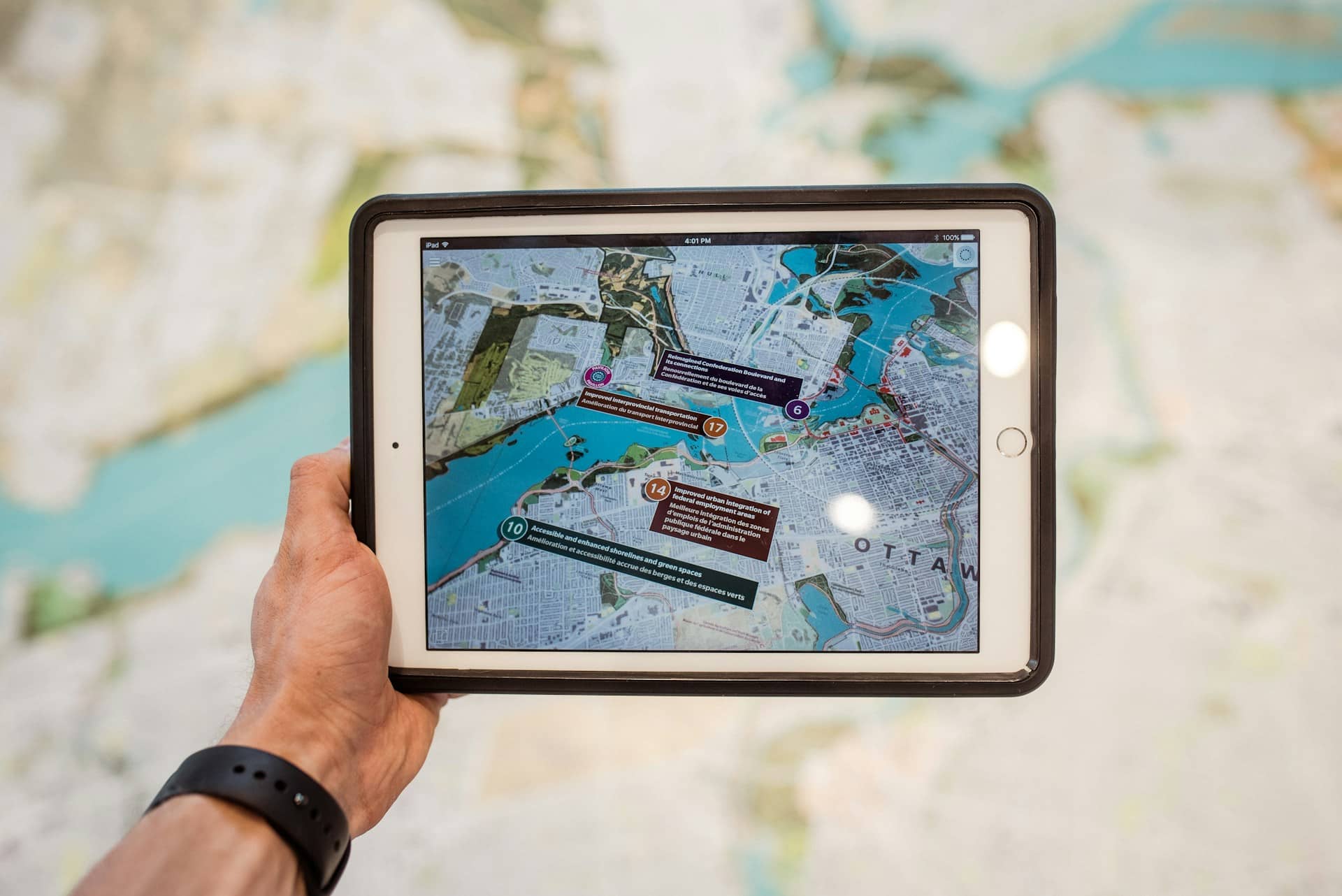Can Augmented Reality Improve the Efficiency and Accuracy of Surgical Procedures?

Cutting-edge technology is not exclusive to the tech industry anymore. In the realm of healthcare, an impressive revolution is happening. Augmented Reality (AR) is driving modern surgical practices towards an era where surgeons, with the help of this advanced technology, can perform intricate procedures with more confidence and precision. Let’s dive into how Augmented Reality is changing the face of medical surgeries.
Augmented Reality: Making Surgeries more Real than Ever Before
Imagine a surgeon conducting an operation with real-time 3D visualizations of the patient’s anatomy, with data and images superimposed on the actual view. Augmented Reality (AR) makes this a reality. AR is a technology that overlays computer-generated images onto a user’s view of the real world. This technology provides an enhanced, interactive view of the physical environment, and it’s rapidly transforming the field of medical surgery.
Lire également : What Are the Challenges and Opportunities in Developing Fully Autonomous Public Transit?
The application of AR in surgical procedures allows surgeons to have a more detailed visualization of the patient’s anatomy, even before making an incision. It enables them to visualize internal structures in three dimensions, using data from CT scans or MRI. This advanced view can potentially reduce the time taken for surgical procedures and enhance the accuracy of the operation.
AR and Surgical Navigation: A Perfect Match
Navigating through the human body during surgical procedures is no less challenging than exploring uncharted territories. AR is playing a crucial role by acting as a high-tech compass for surgeons.
Sujet a lire : How Can AI Enhance Real-Time Decision-Making in Emergency and Disaster Response?
The use of augmented reality in surgical navigation is one of the most promising applications of this technology. AR can guide surgeons through complex anatomy with real-time 3D images overlaid on the surgical field. This functionality provides surgeons with an ‘x-ray vision’-like ability, allowing them to see beneath the patient’s skin. Thus, AR navigation aids in minimizing surgical invasiveness and the patient’s recovery time.
The Role of Google Scholar and Crossref in AR-assisted Surgery
As this topic continues to advance, it’s essential to stay abreast of the latest research and developments. Online databases such as Google Scholar and Crossref serve as vast repositories of academic articles and studies on AR in surgery.
Google Scholar encompasses a broad array of scholarly literature across various disciplines and sources, including theses, books, abstracts, and articles. Crossref, on the other hand, is a digital hub where you can find millions of scholarly articles across a wide range of subjects. From these databases, healthcare professionals can retrieve the latest research papers on AR-assisted surgery, ensuring they stay updated with the most recent findings and advancements in this field.
Improving Surgeon Training with AR
Training surgeons using traditional methods can often be risky, time-consuming, and costly. However, with the advent of AR technology, the training of surgeons has become more efficient and safer.
Using AR for surgical training allows trainees to practice surgical procedures in a risk-free, virtual environment. It provides an immersive experience that closely replicates the real-world scenario, making the training more effective. For instance, trainees can virtually perform complicated surgeries numerous times until they perfect the procedure, without any real-life risk to the patient.
Patient Education: Another Beneficiary of AR
While much focus is on how AR can aid surgeons, it’s also worth noting how this technological advancement can empower patients. AR can be a powerful tool in patient education.
The use of AR can provide patients with a better understanding of their health conditions and the surgical procedures they might undergo. By visualizing their own anatomy and the planned surgery in 3D, patients can more fully understand what to expect, allaying their fears and anxieties. This enhanced understanding can also lead to improved patient compliance and satisfaction with the surgical process.
As we continue to explore the potential of augmented reality in healthcare, it’s evident that this technology has the potential to revolutionize surgical procedures. Whether it’s improving surgical outcomes, enhancing training, or empowering patients, AR is poised to redefine the future of surgery on multiple fronts. However, as with any technology, it’s essential to continue researching and refining these tools to ensure their safety and efficacy in the medical field. So, let’s keep our eyes on this new frontier in surgical technology.
Augmented Reality in Minimally Invasive and Image Guided Surgery
Dealing with complicated and delicate structures of the human body during surgical procedures demands high precision and accuracy. Augmented Reality can play a significant role in enhancing the outcome of minimally invasive and image-guided surgeries.
Minimally invasive surgery is a technique that limits the size of incisions needed and consequently lessens the wound healing time, pain, and risk of infection. In this context, AR can serve as a powerful tool, providing surgeons with real-time 3D images of the patient’s anatomy. This aids in the careful handling of tissues and organs, making the surgery safer and more efficient.
Moreover, in image-guided surgeries, AR can superimpose preoperative imaging data, such as CT scans or MRI, onto the surgeon’s field of view during the operation. This can help surgeons to better understand the patient’s unique anatomy and the location of pathological conditions, leading to more precise surgical interventions.
In addition, the integration of AR with computer-assisted surgical systems can further enhance the surgeon’s capabilities. With these systems, data from preoperative images and real-time tracking of surgical instruments can be combined to provide a comprehensive view of the surgical field. This is particularly beneficial in spine surgery, where precise placement of implants is vital for patient outcomes.
Augmented Reality Surgical Training: The Future of Medical Education
Traditional surgical training methods often involve trainees observing and assisting senior surgeons during real surgeries. However, this method can be fraught with challenges, including limited view of the surgical field and the pressure of performing under the watchful eyes of a seasoned surgeon. Augmented Reality surgical training emerges as a transformative solution to these challenges.
AR can create a virtual surgical environment where trainees can learn and practice surgical procedures repeatedly without the risk of causing harm to a real patient. This method offers a hands-on learning experience, significantly improving the trainee’s skill set and confidence level. It also allows trainee surgeons to learn at their own pace, reducing the stress related to real-time surgical training.
In addition, AR can simulate a variety of clinical scenarios, helping trainees to develop problem-solving skills and prepare for rare or complex cases. This technology can also enable remote training, allowing trainees to learn from experts worldwide without the time and cost associated with travel.
Conclusion: The Future of AR in Surgical Procedures
The frontier of augmented reality in surgical procedures is still expanding, with its potential only beginning to be realized. Whether it’s improving the efficiency and accuracy of surgeries, enhancing the training of future surgeons, or bolstering patient education, AR has the potential to bring about a paradigm shift in the realm of surgical procedures.
As we navigate this exciting new terrain, resources such as Google Scholar, Crossref, and PubMed offer an important means to stay updated with the latest research and developments in AR-assisted surgery. The information gleaned from these databases will be vital in refining AR tools and applications, ensuring their efficacy and safety.
While AR holds much promise, it is imperative to remember that technology should act as an enabler and not a replacement for the essential skills, expertise, and judgement of the surgeon. Care should be taken to ensure that the adoption of these new technologies does not compromise the quality of patient care.
As we look to the future, we can anticipate that augmented reality will continue to evolve and its applications in healthcare will become more robust. The synergy of medicine and technology will undoubtedly lead to more accurate, efficient, and patient-friendly surgical procedures.
